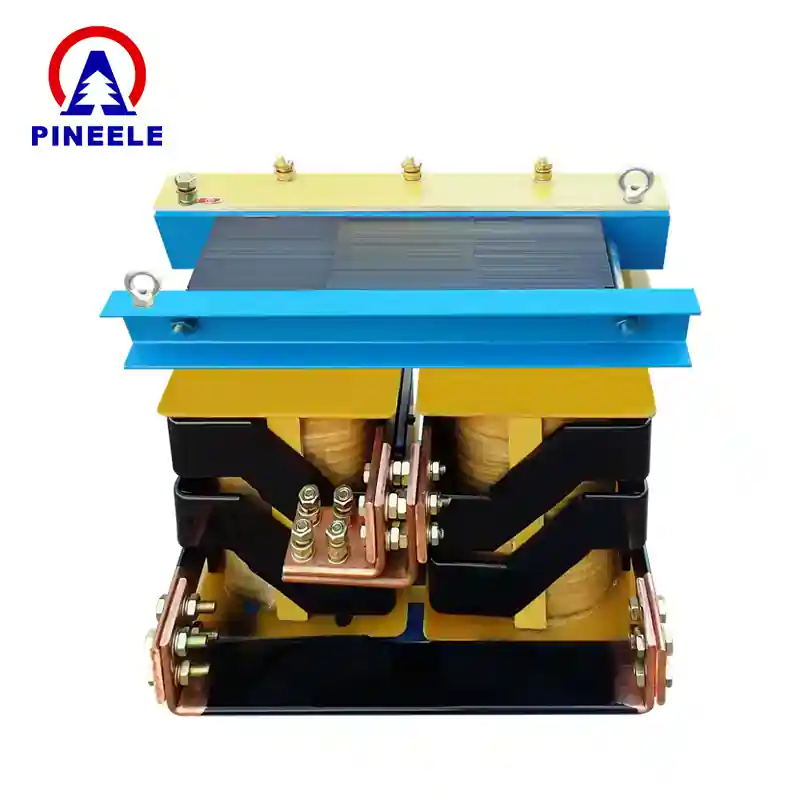A dry-type transformer is an electrical device that transfers electrical energy between circuits through electromagnetic induction, utilizing air or other gas as the cooling medium instead of liquid. This design eliminates the need for oil or other liquid coolants, making dry-type transformers safer and more environmentally friendly.

Applications of Dry-Type Transformers
Dry-type transformers are widely used in various settings due to their safety and reliability:
- Commercial Buildings: Ideal for shopping malls, office complexes, and hospitals where fire safety is paramount.
- Industrial Facilities: Used in manufacturing plants and chemical industries due to their resistance to harsh environments.
- Renewable Energy: Employed in wind and solar power installations for efficient energy distribution.
- Underground and Substations: Suitable for installations where space is limited and ventilation is a concern.

Market Trends and Developments
The global dry-type transformer market is experiencing significant growth, driven by the increasing demand for safe and environmentally friendly power distribution solutions. According to a report by MarketsandMarkets, the market is projected to reach USD 9.2 billion by 2028, growing at a CAGR of 6.8% from 2023.
Factors contributing to this growth include:Grand View Research
- Urbanization: Rapid urban development necessitates reliable and safe power distribution systems.
- Renewable Energy Integration: The shift towards renewable energy sources requires transformers that can handle variable loads efficiently.
- Stringent Safety Regulations: Governments and regulatory bodies are enforcing stricter safety standards, favoring the adoption of dry-type transformers.
Technical Specifications
Dry-type transformers come with various technical features tailored to specific applications:
- Voltage Range: Up to 35 kV, accommodating both low and medium voltage applications.
- Capacity: Ranging from 30 kVA to 40,000 kVA, suitable for diverse power requirements.
- Cooling Methods: Natural Air (AN) and Forced Air (AF) cooling systems are employed based on the load and environmental conditions.
- Insulation Class: Typically Class F or H, indicating the maximum operating temperature.
- Standards Compliance: Manufactured in accordance with ANSI, IEEE, IEC, and NEMA standards.
Comparison with Oil-Filled Transformers
| Feature | Dry-Type Transformer | Oil-Filled Transformer |
|---|---|---|
| Cooling Medium | Air or gas | Oil |
| Fire Risk | Low | Higher |
| Maintenance | Minimal | Regular oil checks |
| Environmental Impact | Eco-friendly | Potential oil leaks |
| Installation | Indoor/Outdoor | Primarily Outdoor |
| Efficiency | Slightly lower | Higher |
Dry-type transformers are preferred in environments where safety and environmental concerns are paramount, despite having slightly lower efficiency compared to oil-filled counterparts.
Selection and Purchasing Guide
When selecting a dry-type transformer, consider the following factors:
- Load Requirements: Determine the total load and future expansion possibilities.
- Voltage Specifications: Ensure compatibility with the system’s voltage levels.
- Environmental Conditions: Assess the installation environment for factors like humidity, temperature, and ventilation.
- Compliance Standards: Verify that the transformer meets relevant industry standards.
- Manufacturer Reputation: Choose manufacturers with a proven track record for quality and reliability.
Frequently Asked Questions (FAQ)
A1: Dry-type transformers offer enhanced safety due to the absence of flammable liquids, require minimal maintenance, and are environmentally friendly, making them suitable for indoor installations and sensitive environments.
A2: Yes, with appropriate enclosures and protection against environmental factors, dry-type transformers can be installed outdoors.
A3: Calculate the total load in kVA, consider future expansion, and consult with manufacturers or electrical engineers to select a transformer that meets your specific requirements.
